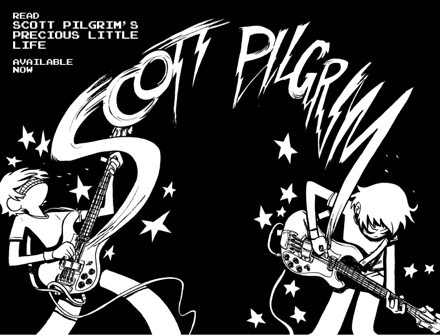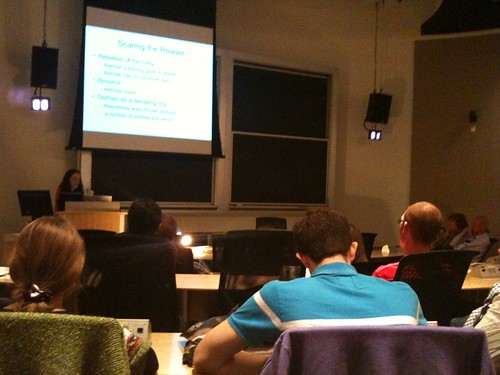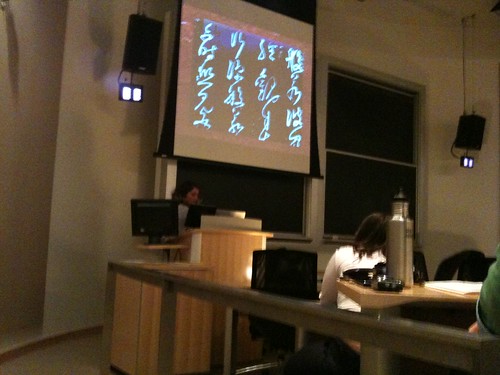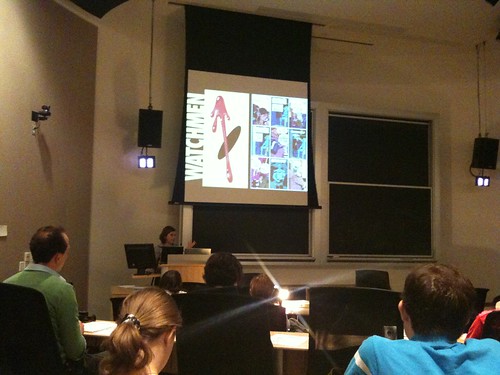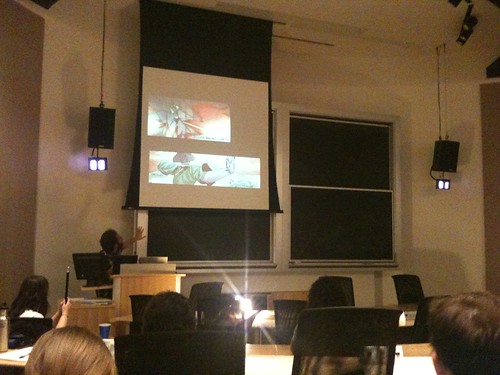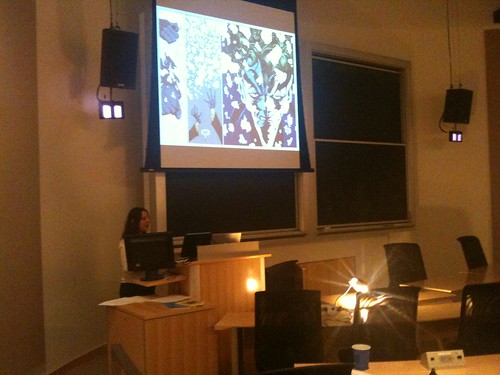I bought
"The Life and Times of Savior 28" #5 (from IDW Comics) two months back and, as I'd gotten used to over the previous issues of this mini-series, I got something much more than the average smart superhero story.
I got something beautiful.
This review of "The Life and Times of Savior 28" #5 is long overdue, yes. But J.M. DeMatteis' and Mike Cavallaro's remarkable mini-series deserves more praise and a more critical exploration than I have seen it receive.
Alan Moore has stated that when he was writing the
"Watchmen" mini-series, he really felt like it was going to be the end of the superhero genre. He thought that as far as he was concerned once he'd shown that the ultimate expression of Superman had to be either detached from humanity or devoted to destroying the few to save the many and the ultimate expression of Batman would either be a non-functioning psycho or an all-too human man-child the superhero genre would be dead. "Watchmen" was to be its tombstone. How naive of him.
The truth, as things turned out, is that people loved "Watchmen" so much (and indeed loved the psychopathic Rorschach most of all) that the genre was rejuvenated as a place where characters could be seen somewhat realistically destroying each other mentally and physically on a monthly basis. Superhero comics are still for children... except they also have to be violent enough that adults will take them seriously. Superhero comics have to be lighthearted enough that children will find them exciting and hopeful... except again they also have to be grounded enough that adults take them seriously. Paul Levitz, the until-just-recently Publisher of DC Comics, said in the 2003 documentary
"Comic Book Superheroes Unmasked": "We point out, with some passion and energy, that comics not only aren't only for kids, they're not mostly for kids today." And, on the subject of "Watchmen", "Most of the guys in comics live within about fifty miles of here, so we were all at the same poker-games and the same parties. And it was just: 'Wow, how the hell did he [Moore] do that?' and you went home and you ripped up whatever you had done that week and just said 'No, dammit. There's more I can do.' " As well as the glorious general statement: "Comic-book writers and artists are doing the same thing the storytellers did drawing pictures on the caves at Lascaux. We're using story to create context for life. On a very, very good day (and we don't have enough of them) that becomes art, on an ordinary day it becomes escape. It's always magic."
(Yeah. If you haven't watched that documentary yet, you should.)
So the superhero fiction writer of today must ask himself this archetypal question: To continue the fight month after month or try to do something more?
The main character of "The Life and Times of Savior 28" is cracking under this exact pressure. Savior 28 a.k.a. James Smith (the most fantastically everyman secret I.D. name I'VE ever heard) is a character who doesn't know who he is anymore in the wake of the September 11th attacks. Like many Americans. Like the superhero genre itself.
I don't think any of us truly appreciate our superheroes. Despite the millions they rake in at the box office, they still seem to be a cultural joke in most people's eyes. That's the beauty of "Watchmen", it didn't take its characters for granted. And that's the main reason I can't stop thinking of "The Life and Times of Savior 28" as the new "Watchmen", because it doesn't either. And you, also, will no longer be able to take your superheroes for granted after you read the end of
the first issue of "Savior 28". Because to watch a superhuman character lose the woman he'd loved, and drown the pain in alcohol, only to wake up on September 12th, 2oo1 and see the epitome of failure in his eyes? That's pain. Anguish, even. For James Smith and for the reader. What does James Smith do? The invulnerable super-powered flying man of the title?

He opens another bottle of scotch.
His next reaction? Suicide attempts.
Plural, of course. He's superhuman.
Mike Cavallaro's art is key to the evocation of pain in these scenes. James Smith's face changes in each panel into a new mask of horror. (Really. Click on this image, make it as big as you can get it and look at each panel. Distinctive expression of pain on each face in each image.) His smooth,
almost cartoony line allows the character to fool our senses for a moment every time he appears in one of many too-horrible-for-words moments.
This is actually the first page of "The Life and Times of Savior 28" art I ever saw. It's the first page of
the second issue. It sold me on buying the issue pretty much immediately. The following 21 pages sold me on the whole series.
Even though that was my introduction to the series, I don't think I'd recommend you read it that way. The series' writer and concept originator J.M. DeMatteis had something in mind in the structure of the mini-series. Is it as structured as "Watchmen"'s plot? No. Each issue doesn't have a unique arc and structure, but they do have their own themes: #1 and #2 are about the history of the superhero and the history of the 'real world', respectively. That's why the first issue is titled "A Kind of Eulogy".
The third issue is about the superhero as celebrity/political figure. The media and political pundits of the 'real world' are featured. Hence, "The Whole World Is Watching". The
fourth focuses on the Oedipal Complex exhibited by most superhero characters (albeit with a role reversal) and the fifth (titled "In Pace Requiescat") is about the superhero as (finally!)
savior. The main thematic elements of superhero narratives are on display here: history (mainly, their own), social/political relevancy, Freudian/Oedipal tension, and religion.
Is this a definite and clear structure? Hell no. There are bits of every theme in each issue. Plus I just made half of that stuff up! I'm an academic folks, what can I say? But, this is part of my point. "The Life and Times of Savior 28" is not 'the "Watchmen" of our generation'. Such a title would be pretty damn meaningless anyway. It feels in a few ways, to this reviewer at least, like a kind of anti-"Watchmen". An antidote to ultra-realistic, ultra-violent, ultra-structured superhero comics.
A silky-smooth-line-drawn, tastefully intense, organic superhero comic that examines and comments on superhero comics.The final issue does not disappoint. The entire mini-series is framed as the memoir of Savior 28's former sidekick, Dennis McNulty, and the story reaches an emotional and absolutely fitting conclusion for both Savior 28 and his 'biographer'. I couldn't stop myself from reading this as soon as it was in my possession. The story hit home emotionally as I read it standing in a falafel shop. It is finally, at the end, so sad. Cavallaro's smart splash-page storytelling techniques are in full force here. But the real crescendo of the piece is a single page of twelve small panels in which almost the entirety of the series is silently summarized and as we see Savior 28's and Dennis McNulty's lives meet and intertwine and separate and end all on one page... it hurts. Everything that Paul Levitz said about comics is reflected in that one page, as well as in the last issue, as well as in the entirety of the series.

"The Life and Times of Savior 28" is a particularly smart and particularly beautiful exegesis of superhero narratives because it makes it clear that our superheroes can be saviors if, just like REAL people, they choose to sacrifice something REAL. Is it child-appropriate? Not really, no. As evidenced by the nine panel-grid page above and the splash-page at left. (If you want a great kid-appropriate comic, you must check out Clare's editorial
here.)
I believe the mini-series "The Life and Times of Savior 28" reconciles much of the problems facing most superhero comics (and their writers...) coming out today.
Read it. A
trade paperback collection has been solicited for January. For my money, you want to read the five 22-page issues to really get a feeling for their individual themes and rising energy. But I'm crazy. Just read it.








